Do binturongs make good pets? No, they don’t and I bet it’s even impossible to get one. The animal which is also known as bearcat is endangered and protected by most countries in the world. Additionally, only very little is known about the species which makes it difficult to take proper care of.
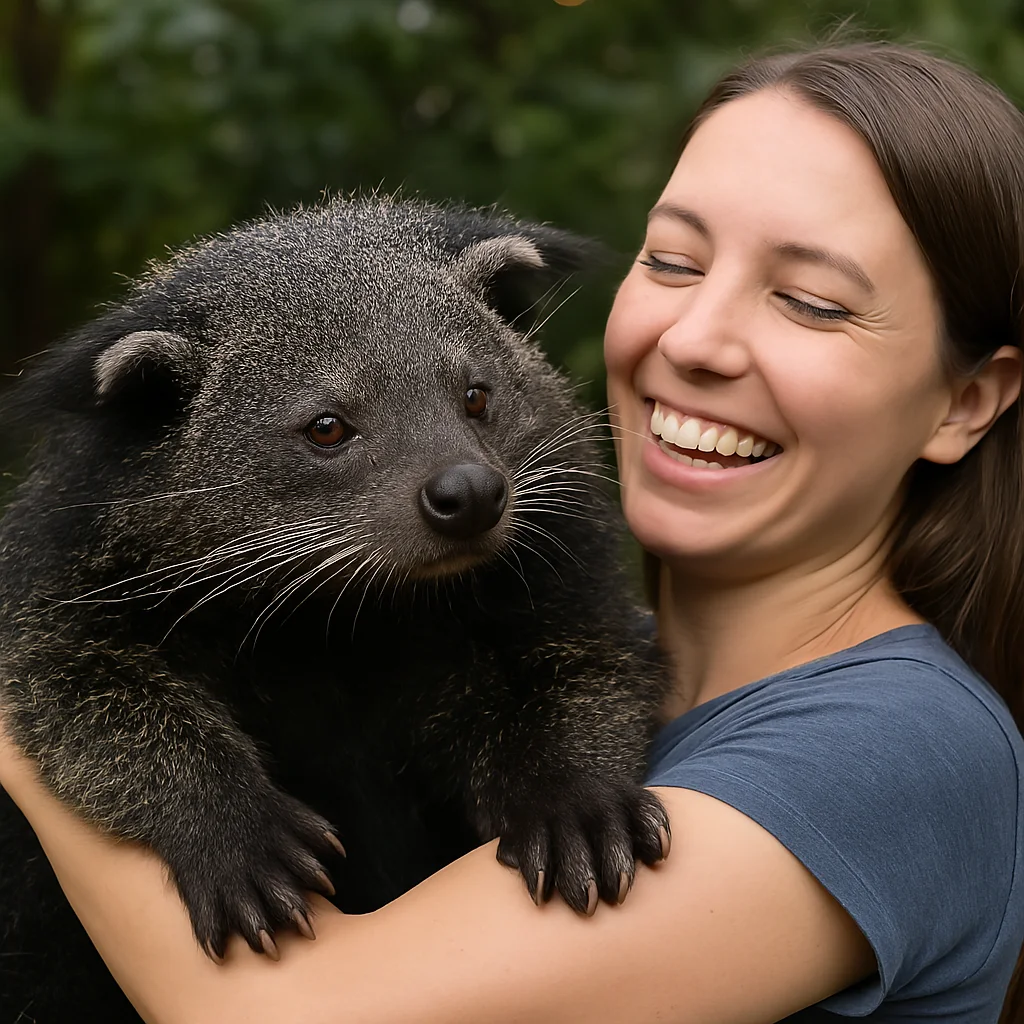
I know binturongs are cute animals but they are wild and should stay in their natural habitat. They aren’t meant to be pets. But before we go into the details of what it would be like to keep a bearcat as a pet, you might ask what a binturong actually is.
Binturongs, or “bearcats,” are exotic animals not commonly seen in homes. If you like rare pets, explore our guide on Can You Own a Pet Pangolin? for another extraordinary creature.
Is a Binturong a Good Pet?
While the idea of having a binturong as a pet might sound exciting to some, the reality is much more complex. Binturongs are not domesticated animals, and their care requirements go far beyond what most typical pets need.
They are intelligent, curious, and can be affectionate when hand-raised, but they are also territorial, messy, and potentially aggressive if not properly socialized. Their strong claws and teeth can do real damage. Most importantly, they are wild animals with specific environmental and nutritional needs.
Legal and Ethical Considerations
Before looking for a binturong pet for sale, check your local laws and regulations. In many parts of the world, including some U.S. states, it is illegal or heavily restricted to own a binturong without a special permit or license.
Organizations like PT Binturong, which focus on conservation and education, strongly discourage the private ownership of these animals due to the risks involved and the declining wild populations. Always make sure your decision to adopt a binturong does not contribute to illegal wildlife trade.
In most states of the US as well as in Canada and many western countries it’s illegal to keep bearcats as pets. States like California have the strictest laws and ban these animals completely. However, there are also states where the ownership of exotic pets isn’t regulated at all and others might ask for a permit.
The thing with binturongs is, that they are listed as vulnerable by the IUCN. This leads to the fact that trading and importing them is prohibited.
So even, if it’s probably legal in your state to own, you would face legal issues. On the other side, you would face ethical concerns and a lot of other problems with a pet binturong.
Binturong Diet and Nutrition
One of the most critical aspects of binturong care is nutrition. A proper binturong diet mimics what they eat in the wild: a mix of fruits, small animals, insects, and eggs.
Key Diet Components:
- Fruits: Bananas, mangoes, grapes, and papayas are common favorites.
- Protein: Raw eggs, cooked chicken, insects, and even rodents.
- Supplements: Calcium and vitamin D may be needed to ensure bone health, especially in captivity.
Improper diet is a leading cause of health issues in captive binturongs, such as obesity, bone deformities, or digestive problems. Feeding them cat or dog food alone is not sufficient.
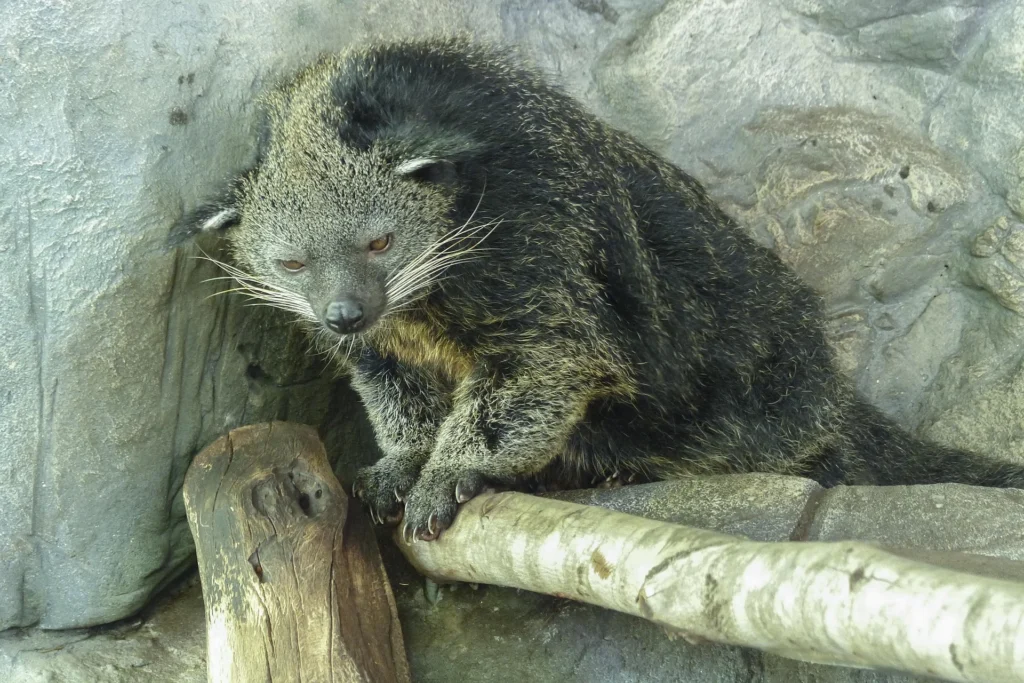
Housing and Environmental Needs
Housing a binturong pet requires a significant investment. These are large animals (up to 4 feet long including the tail) that need vertical space to climb and explore. A suitable enclosure should include:
- Tall climbing structures or trees
- Nesting boxes or dens
- A secure fence with a roof (they are escape artists!)
- Clean water and shaded areas
Temperature and humidity should also be monitored closely. Binturongs are native to tropical environments and may suffer in colder climates.
Problems With Housing Binturong as a pet
There would definitively be some problems with the housing of a pet binturong. They need a warm climate similar to the one in their natural habitats. So, if you don’t live in a warm and tropic region, you would need an indoor enclosure.
But as they are not domesticated it would be impossible to litter train these animals. Additionally, they have quite strong scent glands like minks and other animals of the family. As you might imagine, they like scent marking their territory and that would be your rooms.
An enclosure like a cage is usually not big enough for binturongs so you would need to build your own. This is an expensive and time-consuming project itself. Bearcats are heavy climbers and spend most of their lives on trees. The only time they spend on the ground is used to get from one tree to another.
It’s very difficult to impossible to meet these requirements in an indoor enclosure.
Behavior and Socialization
A binturong can form strong bonds with its caregiver but requires constant handling and socialization from a young age. Even then, they may show unpredictable behavior during mating season or when they feel threatened.
They are mostly nocturnal, so expect activity (and noise) during the night. Their scent glands also release a potent odor—similar to corn chips—which may be unpleasant to some.
Are Binturongs Friendly to Humans?
Binturongs are not domesticated animals, but they can form bonds with their human caretakers if raised from a young age. Some individuals become affectionate, allowing gentle petting and interaction. However, their behavior can be unpredictable, and they may not tolerate strangers or sudden movements well. Early socialization and constant human contact are essential to make a binturong more people-friendly. Despite this, their wild instincts remain strong, so they should be handled with respect and caution.
Binturong Price and Costs
The binturong price varies depending on the source, age, and health of the animal. On average, you can expect to pay anywhere from $3,000 to $8,000 for a captive-bred binturong, excluding enclosure setup and ongoing care costs.
Additional expenses include:
- Vet care (with an exotic animal specialist)
- Custom enclosure (often several thousand dollars)
- Specialized diet and supplements
- Enrichment items (toys, climbing ropes, etc.)
Long-term care may easily exceed $10,000 a year.
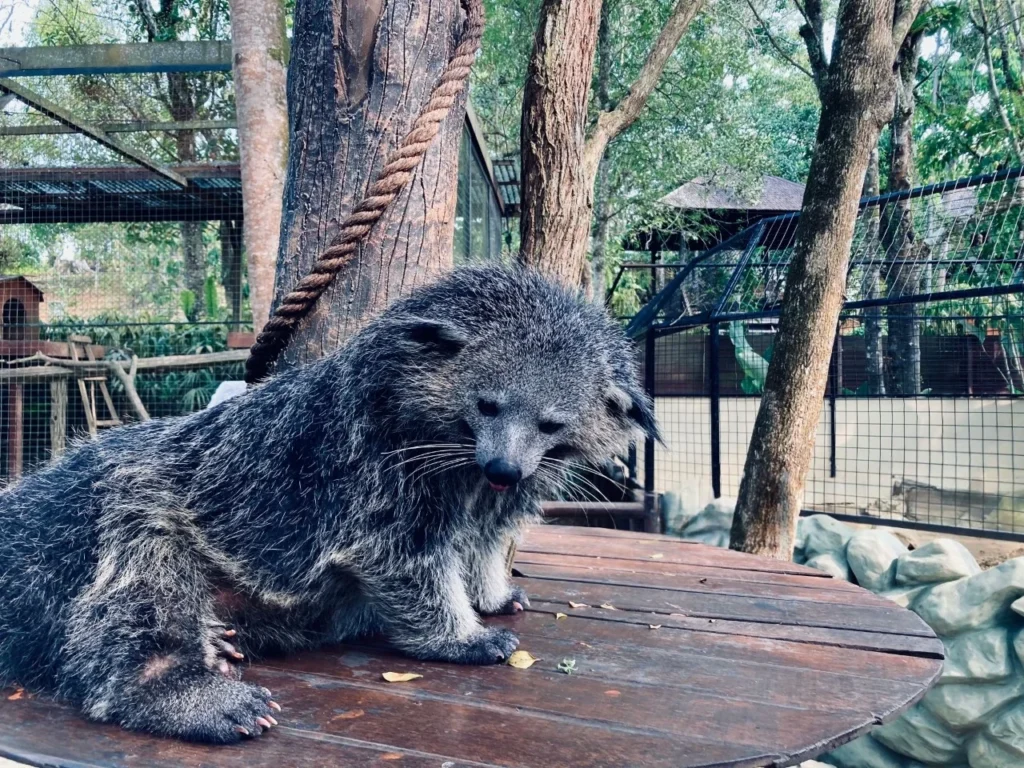
Where to Find a Binturong Pet for Sale
Finding a binturong pet for sale legally is extremely difficult. Reputable breeders are rare, and most binturongs in the pet trade are either wild-caught or come from questionable sources. Buying from such sources not only endangers the species but can also bring legal trouble.
If you’re determined, look for USDA-licensed exotic animal breeders and always request documentation to prove that the animal was captive-bred and not taken from the wild.
More About Binturong as a pet
How Do You Take Care of a Binturong?
Proper binturong pet care requires knowledge, resources, and commitment. They need a large, enriched enclosure that mimics their natural habitat—think vertical climbing structures, hiding spots, and plenty of foliage. Clean, fresh water must be available at all times, and their diet needs to be carefully monitored. Since binturongs are arboreal, secure fencing and perches are critical. Regular vet check-ups with exotic animal specialists are a must. They also need mental stimulation through toys and interaction to prevent boredom.
Does a Bearcat Make a Good Pet?
While owning a binturong pet may sound exciting, they are not ideal for most people. Bearcats have complex needs that go beyond the capabilities of the average household. Their nocturnal habits, musky odor, and unpredictable behavior can pose serious challenges. They may not get along with other pets and can be destructive if left unsupervised. Additionally, depending on your region, ownership may be illegal without a special permit. For most, admiring them in sanctuaries or the wild is a better option than trying to keep one at home.
How Long Do Binturongs Live in Captivity?
In captivity, binturongs can live between 18 to 25 years, provided they receive proper care, a healthy binturong diet, and regular medical attention. This is significantly longer than their wild lifespan due to the absence of predators and consistent food sources. Their long life expectancy adds to the responsibility of keeping a binturong as a pet, as you must be ready for decades of commitment.
Are Binturongs Aggressive?
Binturongs are not inherently aggressive, but they can become defensive or territorial, especially if they feel threatened or stressed. They have strong jaws, sharp claws, and can bite if provoked. Some binturongs tolerate human interaction better than others, but aggression may still occur during mating season or when guarding food. Proper handling, patience, and understanding of their behavior are crucial to avoid incidents.
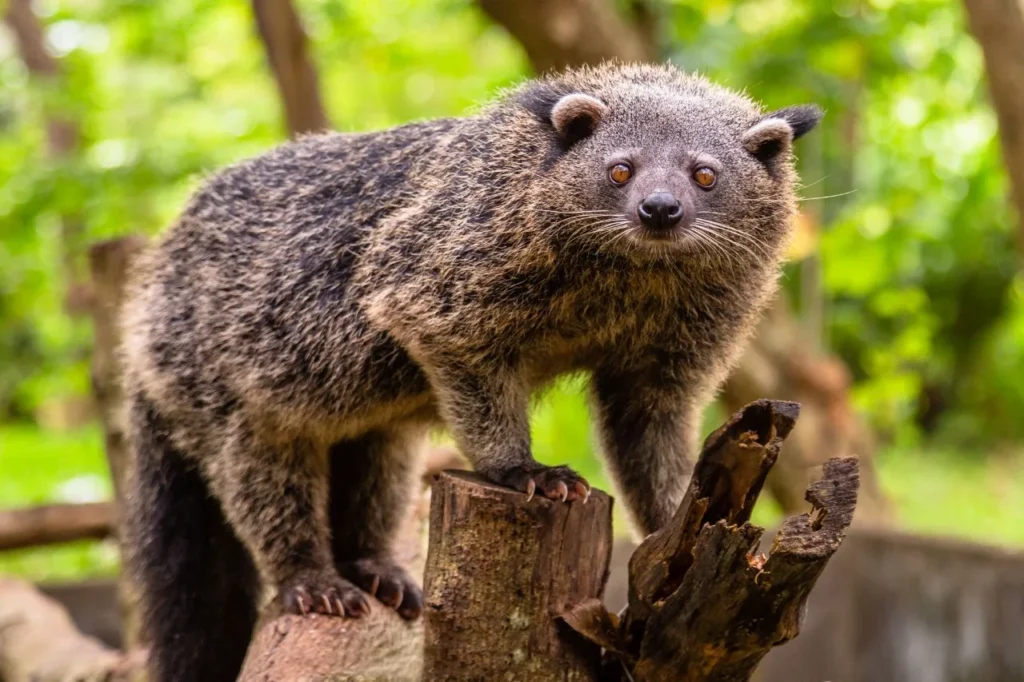
What Does Binturong Smell Like?
One of the most unique aspects of the binturong is its scent. Their musk smells like buttered popcorn due to a compound called 2-acetyl-1-pyrroline, which is also found in cooked rice and popcorn. While some people find the scent amusing or pleasant, it can become overwhelming in enclosed spaces. This scent-marking behavior is natural and used for communication and territory marking.
What Does Binturong Eat?
The binturong diet is omnivorous, consisting of fruits, small animals, eggs, insects, and occasionally carrion. In captivity, their diet should include a variety of fruits like bananas, papayas, and apples, as well as protein sources like cooked chicken, boiled eggs, and specially formulated carnivore diets. Supplements may be needed to maintain nutritional balance. Overfeeding can lead to obesity, a common problem in captive binturongs.
Where Do Binturongs Sleep?
Binturongs are nocturnal and usually sleep during the day in high places like tree branches or enclosed platforms. In captivity, they need access to cozy, elevated areas where they can rest undisturbed. Hammocks, boxes, and foliage-covered platforms are ideal for their comfort and sense of security.
Are Binturongs Dangerous?
While not inherently dangerous, binturongs as pets pose risks due to their size, strength, and unpredictability. They can be aggressive when startled and have sharp claws and teeth. Without proper training and environment, they can become a danger to owners, children, or other pets. Additionally, their care needs can easily be mishandled by inexperienced individuals, increasing the risk of injury.
How Many Binturongs Are Left in the World?
The exact population of binturongs in the wild is unknown, but they are classified as “Vulnerable” by the IUCN Red List. Habitat loss due to deforestation and illegal wildlife trade has significantly reduced their numbers. Conservation efforts are ongoing, but the situation remains concerning. This is another reason why choosing a binturong pet should be done ethically—preferably through sanctuaries or certified breeders with conservation goals, such as PT Binturong, if involved in ethical breeding.
Binturong Pet for Sale: What to Know
If you see a binturong pet for sale, research thoroughly before considering a purchase. Make sure the seller is licensed and adheres to wildlife regulations. Avoid black-market sources that contribute to wildlife exploitation. The binturong price can range from $5,000 to $20,000 or more, depending on availability, age, and legality. Beyond the price tag, consider the long-term costs of food, housing, medical care, and permits.
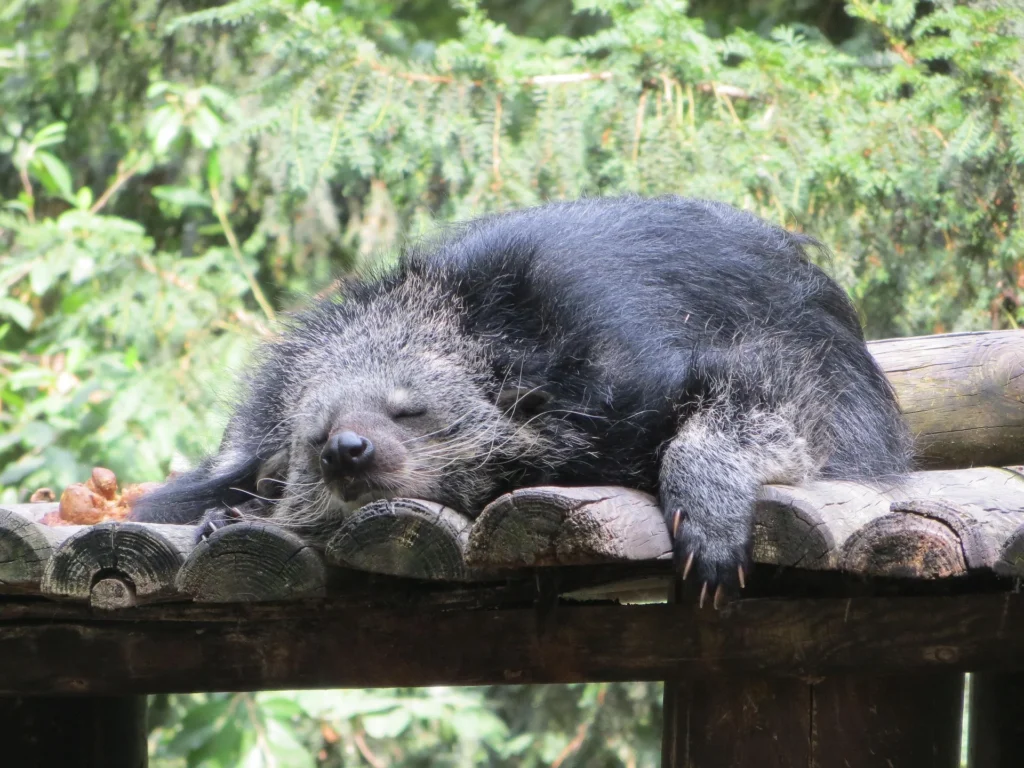
Due to their unique care requirements, binturongs aren’t suitable for everyone. Learn about another quirky yet legal pet in our article on the Beaver as a Pet.
Final Thoughts
Keeping a binturong as a pet is a massive commitment and one that should not be taken lightly. While these creatures are undeniably captivating, they are not suited for the average household. Their complex care requirements, behavioral challenges, and legal restrictions make them a pet best reserved for trained professionals or licensed sanctuaries.
If you’re still interested in owning one, consult with exotic pet veterinarians, wildlife experts, and legal advisors. And remember: sometimes, supporting conservation efforts like those from PT Binturong is a better way to help these amazing animals than trying to keep one in your home.

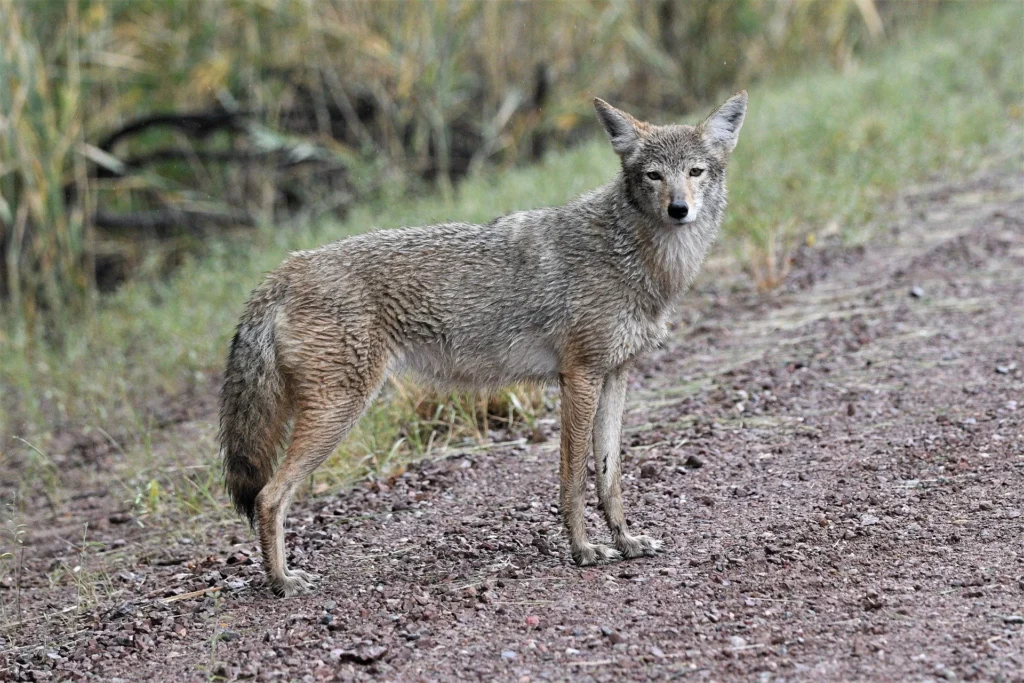
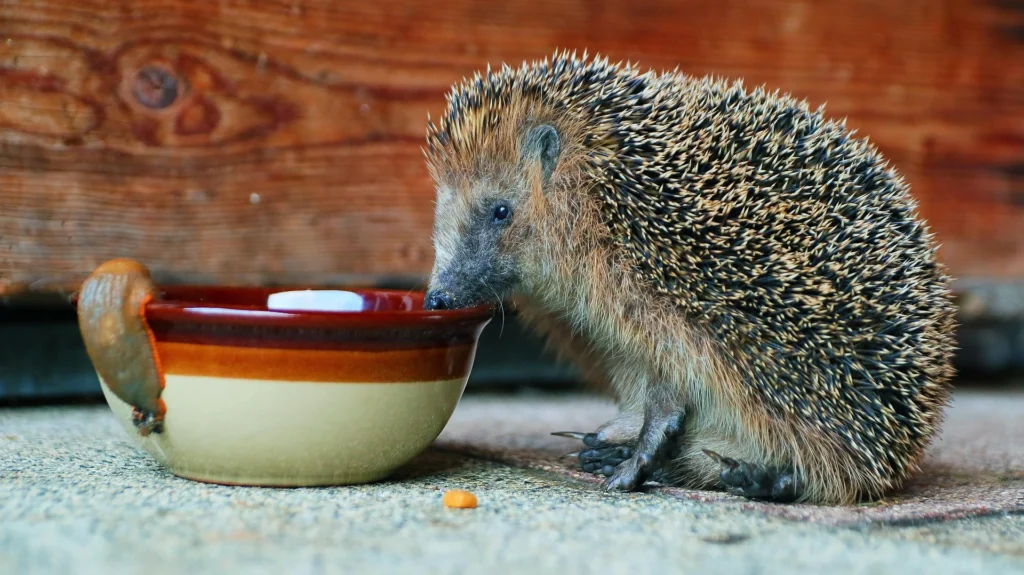
I dont think its really nice if i keep Binturong as a Pet, its so expensive anda so hard to have one